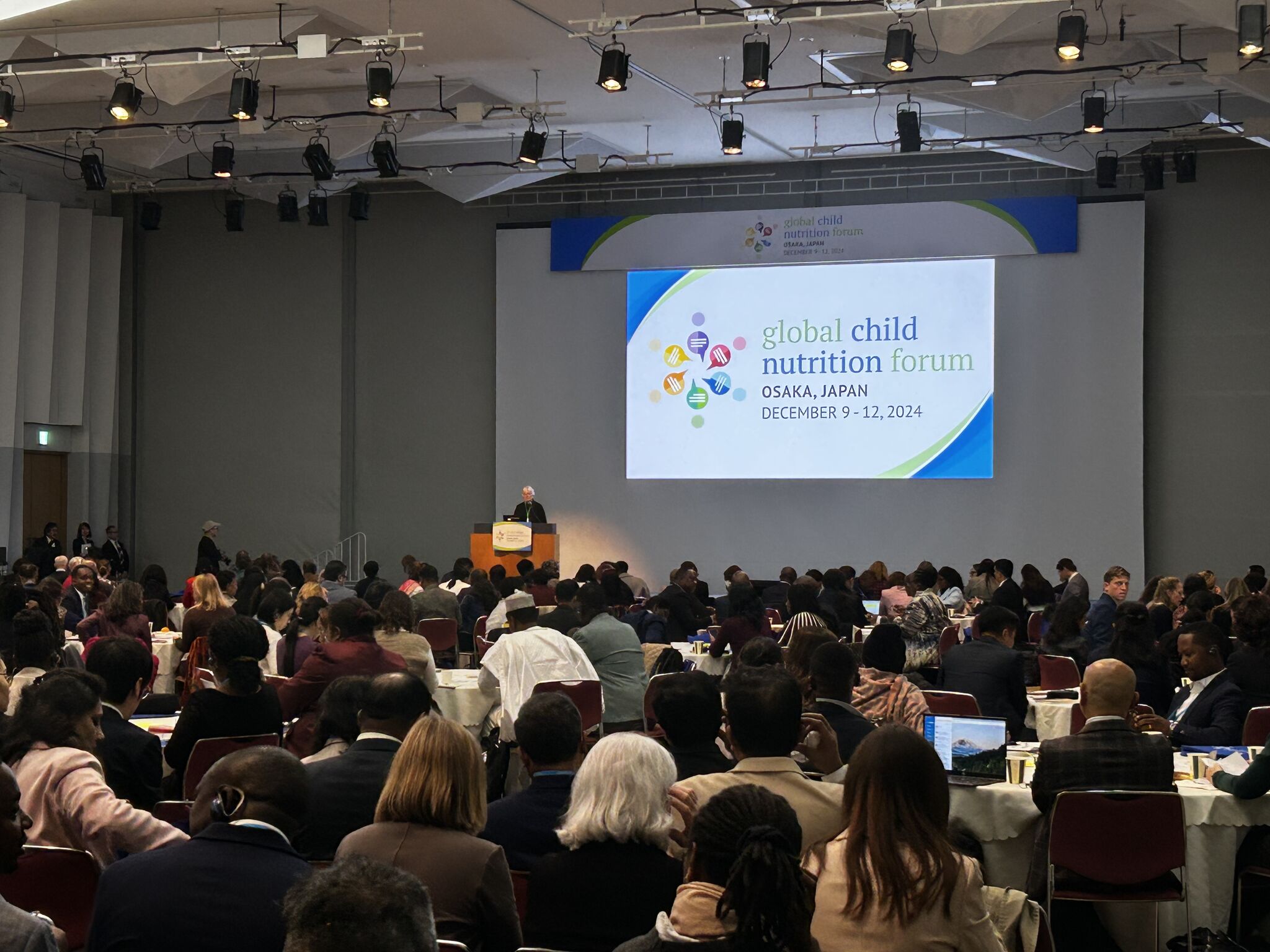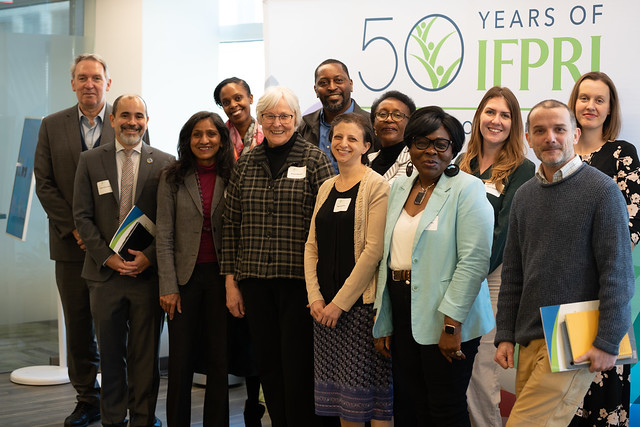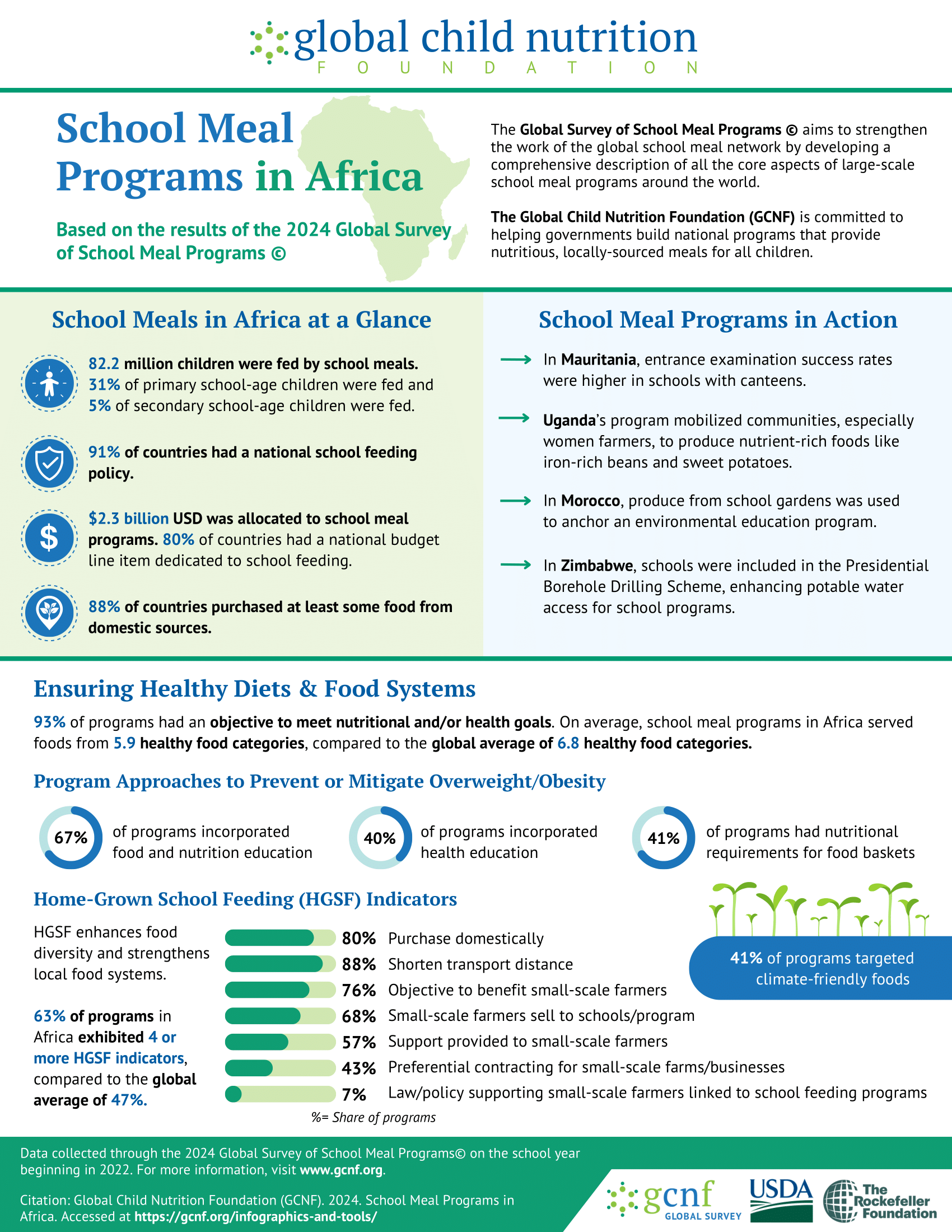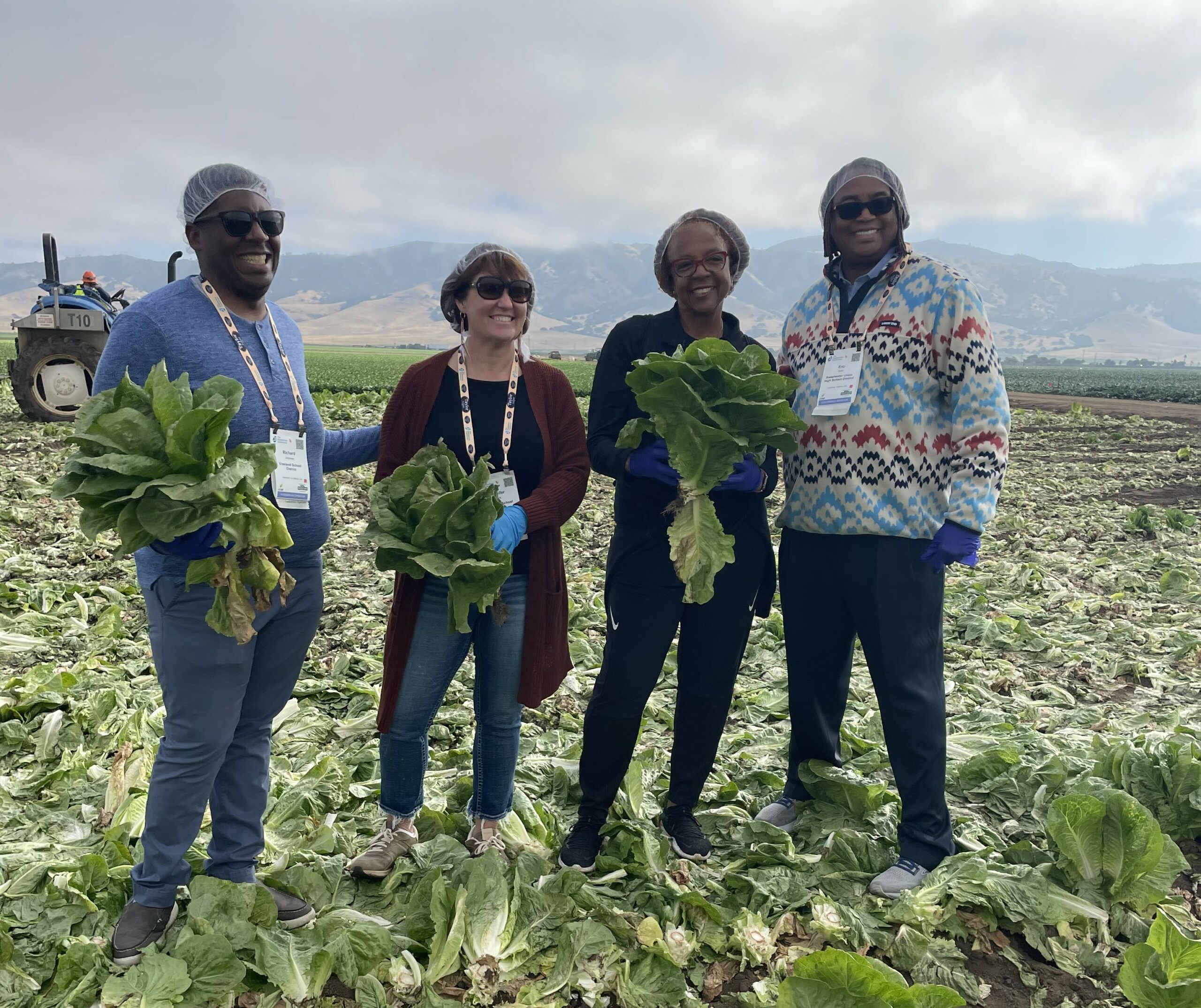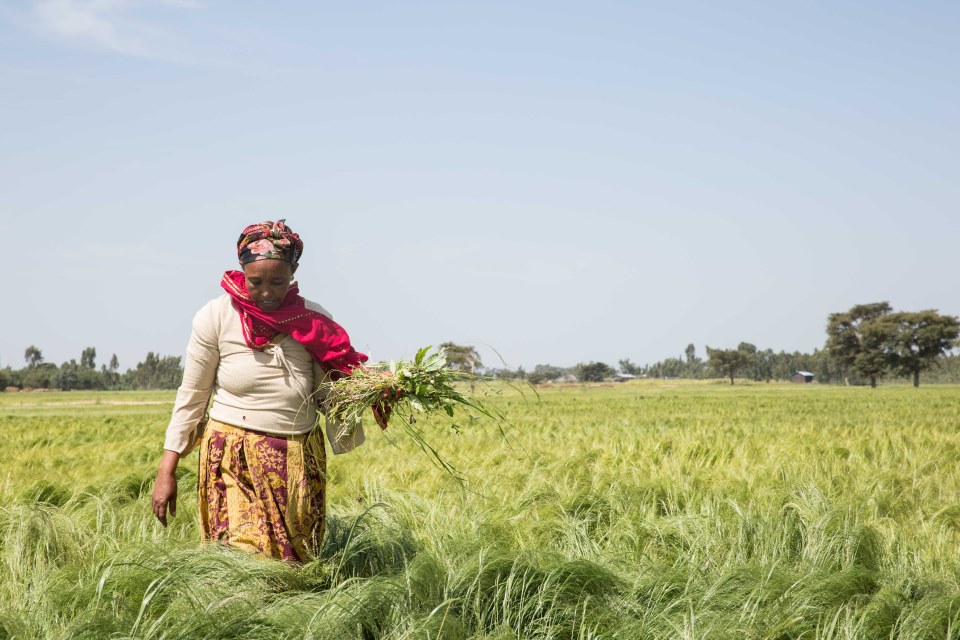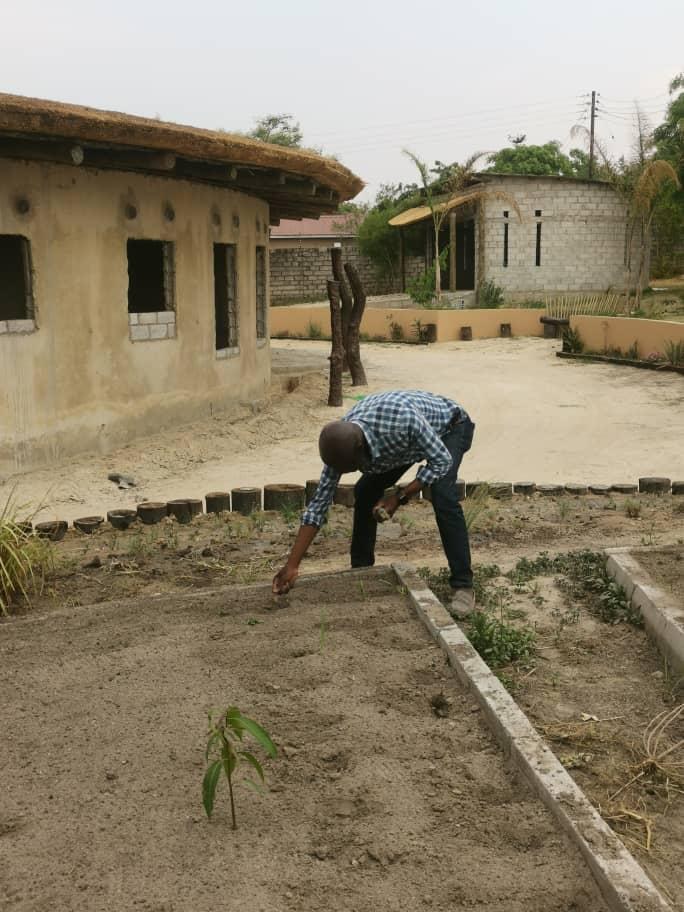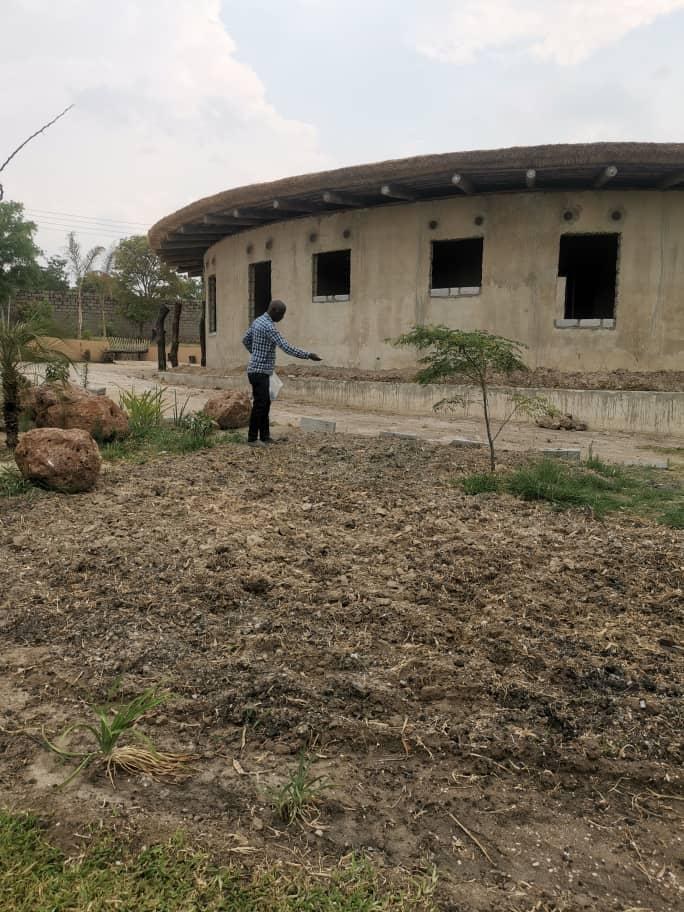Spring 2025 is in full swing, and it’s already been meaningful for the global school meal community. GCNF proudly represented school meals at various events, including the Nutrition for Growth (N4G) Summit and the World Bank-IMF Spring Meetings.
Continue readingThe 2024 Global Child Nutrition Forum Report Released: Key Insights & Outcomes Supporting School Meals Worldwide
The Global Child Nutrition Foundation (GCNF) is pleased to announce the release of the 2024 Global Child Nutrition Forum Report, detailing the key discussions, insights, and actions that emerged from the Global Child Nutrition Forum.
Continue readingGCNF Newsletter for February 2025
The Global Child Nutrition Foundation (GCNF) invites you to attend the Global Child Nutrition Forum taking place in Osaka, Japan from 9 through 12 December 2024! This four-day learning exchange is organized by GCNF and International Child Nutrition Japan in collaboration with the Government of Japan and the School Meals Coalition (SMC).
Continue readingKey Insights: School Meal Programs in Africa
Key Insights: School Meal Programs in Africa
Blog by Alissa Rutkowski, GCNF Communications Coordinator
According to the latest School Meal Programs Around the World report, 82.2 million children across Africa received school meals in the 2022 school year. This remarkable reach is especially meaningful as we celebrate the 10th African Day of School Feeding and reflect on a decade of progress in strengthening education, nutrition, and economic development through these vital programs.
The third School Meal Programs Around the World report, published by the Global Child Nutrition Foundation (GCNF), presents key findings from the 2024 Global Survey of School Meal Programs ©.
Africa’s school meal programs lead in several areas, including:
- 80% of African countries have a national budget line item dedicated to school feeding: Predictable funding helps ensure that millions of children can receive school meals year after year.
- 63% of programs exhibit 4 or more Home-Grown School Feeding indicators: African nations are at the forefront of preferential treatment of small-scale farmers, providing additional support to small-scale farmers, and reducing miles traveled by food.
- 91% of African countries have a national school feeding policy: On average, countries with a national school feeding policy reach 10% more school-aged children.
Across Africa, school meal programs are making an impact:
- In Mauritania, entrance examination success rates were higher in schools with canteens.
- Uganda’s program mobilized communities, especially women farmers, to produce nutrient-rich foods like iron-rich beans and sweet potatoes.
- In Morocco, produce from school gardens was used to anchor an environmental education program.
This decade of commitment reflects the power of school meals to transform lives and communities. For deeper dive into school meal programs across the continent, explore GCNF’s Country Reports and School Meal Programs in Africa infographic highlighting key successes and opportunities.
About GCNF
The Global Child Nutrition Foundation (GCNF) is a US-based 501(c)3 organization founded in 2006 that envisions a future where school meals sustainably nourish all children and help them, their families, communities, and nations to thrive.
GCNF provides governments and their partners with knowledge, tools, and connections so all children can access high-quality school meal programs that contribute to national educational, agricultural, economic, social protection, health and nutrition goals.
A Plate of Food is Power in a Child’s Hands: Celebrating the 10th Anniversary of the African Day of School Feeding
Each year on March 1st, the Africa Day of School Feeding highlights the transformative role of school meal programs in enhancing education, nutrition, and economic development across the continent. Established by the African Union in 2016, this year marks the 10th anniversary of the celebration, recognizing a decade of progress in using school meals as a powerful tool to improve student learning, boost school attendance, and support local food systems. By providing nutritious meals in schools, governments and communities across Africa help ensure that children have the energy and focus they need to thrive in the classroom and beyond.
Continue readingSolving Global Hunger: New Report Highlights School Meal Programs as Drivers of Change
Press Release:
Solving Global Hunger: New Report Highlights School Meal Programs as Drivers of Change
New report explores powerful links between children’s nutrition, small-scale farmers, and global food system resilience
February 4, 2025 (Washington, D.C.) –School meal programs don’t just ensure children go to school and stay fed — they are a powerful force for change in communities and food systems worldwide. According to the results of the latest Global Survey of School Meal Programs© conducted by Global Child Nutrition Foundation (GCNF), school meal programs can increase demand for nutritious foods, support local farmers and influence the environmental sustainability of food systems. This report offers a unique lens to explore the scale, impact and potential of school meal programs, drawing on data from over 160 countries.
Impactful Reach
School meal programs served more than 407 million children in 2022, with one in four primary and secondary school-aged children receiving meals globally. The percentage of enrolled primary school students receiving food at school, which has been proposed as a new U.N. Sustainable Development Goal indicator, is even higher at 39%, or nearly 4 in 10. And, it’s on the rise.
“Access to school food helps address global food insecurity and malnutrition by providing millions of children access to nutritious diets, enhancing micronutrient sufficiency and shifting food preferences in a healthy direction,” says Arlene Mitchell, executive director of GCNF.
Children in Latin America and the Caribbean have better access to school feeding programs than any other region in the world, with just over half (51%) having access, according to the global report. Europe, Central Asia and North America come in second at 42%. From there, it drops steeply to 22% for South Asia, East Asia and the Pacific; 21% in the Middle East and North Africa and 19% for sub-Saharan Africa.
Nutrition and Equity
School meal programs in upper middle and high-income countries provide children better access to healthy foods like dairy products (96%) and fruits (94%) than those in low- and lower middle-income countries. However, they also are more exposed to unhealthy options like processed meats and deep-fried foods. In contrast, school meal programs in low-income countries rely more on legumes (83%) and liquid oils (89%).
Many programs maintain an explicit focus on creating jobs for categories of people who face barriers to accessing the labor market. Specifically, 44% of programs reported a focus on creating jobs for women and 25% reported a focus on creating jobs for youths. This was much more common among programs operating in low-income countries, with 67% giving attention to women’s employment and 40% giving attention to youth employment.
A Lifeline for Small-Scale Farmers
While school meal programs help address malnutrition for millions of children, they also support robust and equitable livelihoods by providing income-generating opportunities for local farmers and others in the food value chain. Plus, they employ a large labor force of school cooks and caterers, food handlers and others. More than half (57%) of the programs explicitly aim to provide small-scale farmers with access to the predictable and stable school food market and to maximize their benefits from such access. This figure rises to 80% among programs in low-income countries and 74% in lower middle-income countries. Yet, gaps remain — only 43% of programs offer additional support to smallholder farmers, revealing a critical opportunity for greater impact.
“The impact of school meal programs globally goes well beyond being an important source of nutritious food for millions of children,” says Mitchell. “By creating a large demand for safe, nutritious and sustainably produced food, school meals can drive global food systems transformation.”
Supporting Sustainable Food Systems
School meal programs can use their buying power to influence the environmental sustainability of food systems by developing environmentally friendly menus; 38% of programs targeted foods considered to be “climate-friendly,” and 79% took steps to reduce food miles.
Beyond sourcing from smallholders, Home-Grown School Feeding programs often include support extended to these farmers to strengthen their collective ability to serve as suppliers. In total, 43% of programs offered additional support to small-scale farmers, such as agricultural extension or training to supply school meal programs. This was most common in low-income countries (67%). Sub-Saharan Africa led on a regional basis, with 60% of programs there reporting they extended such support. Linking school gardens to meal programs can cultivate healthy food preferences; 84% of programs in low- and lower middle-income countries reported having gardens.
The 2024 Global Survey of School Meal Programs report was released at a hybrid policy seminar in Washington, D.C., co-hosted by GCNF and the International Food Policy Research Institute (IFPRI). The survey was conducted by GCNF with support from The Rockefeller Foundation and the U.S. Department of Agriculture. GCNF captured data from 167 countries via the three Global Surveys that have so far been conducted, covering the 2017, 2020 and 2022 school years.
“As this survey demonstrates, school feeding programs can help reshape markets and shift mindsets towards home-grown, climate-resilient meals that nourish students,” said Roy Steiner, senior vice president of the Food Initiative at The Rockefeller Foundation. “The Rockefeller Foundation is dedicated to helping countries transform their school meal programs so they reach more learners, support local farmers and increase demand for regenerative agriculture.”
Visit GCNF’s website for a full copy of the School Meal Programs Around the World Report: Results from the 2024 Global Survey of School Meal Programs © and other resources.
###
Global Child Nutrition Foundation is a US-based 501(c)3 organization founded in 2006 that envisions a future where school meals sustainably nourish all children and help them, their families, communities, and nations to thrive. We provide governments and their partners with knowledge, tools, and connections so all children can access high-quality school meal programs that contribute to national educational, agricultural, economic, social protection, health and nutrition goals. Sign up for GCNF’s newsletter here, and follow us on LinkedIn @global-child-nutrition-foundation and on X @GCNFoundation.
The Rockefeller Foundation is a pioneering philanthropy built on collaborative partnerships at the frontiers of science, technology, and innovation that enable individuals, families, and communities to flourish. We make big bets to promote the well-being of humanity. Today, we are focused on advancing human opportunity and reversing the climate crisis by transforming systems in food, health, energy, and finance. For more information, sign up for our newsletter at www.rockefellerfoundation.org/subscribe and follow us on X @RockefellerFdn and LinkedIn @the-rockefeller-foundation.
Contact:
Daren Williams
Senior Vice President, Public Relations, Curious Plot
303-241-2419
Emily Fredenberg
Senior Program Officer, Global Child Nutrition Foundation
The data are made freely available for government decision makers, donors, researchers, and others dedicated to making data-informed decisions about school meal programs. The data have been rapidly incorporated into major global reports such as GCNF’s School Meal Programs Around the World, World Food Programme’s State of School Feeding Worldwide, and UNESCO’s Ready to Learn and Thrive report, and this data set is a key part of the monitoring mechanism for the School Meals Coalition.
Reducing Hunger and Improving Focus: School Meal Programs at the Intersection of Nutrition and Education
Reducing Hunger and Improving Focus: School Meal Programs at the Intersection of Nutrition and Education
Reflecting on Afshan Khan‘s remarks from the 2024 Global Child Nutrition Forum
Blog by Alissa Rutkowski, GCNF Communications Coordinator in collaboration with the Scaling Up Nutrition (SUN) Movement
International Day of Education, celebrated annually on January 24, emphasizes the pivotal role of education in building equitable, sustainable futures for all. Around the world, school meal programs and nutrition-focused interventions amplify educational outcomes while advancing sustainable development goals. Japan’s Shokuiku (“food and nutrition education”) initiative is one compelling example of how integrating nutrition education into school meal programs can strengthen education systems and equip children with lifelong healthy habits.
At the 2024 Global Child Nutrition Forum in Osaka, Japan, 408 participants from over 82 countries gathered for four-days of learning, collaboration, and advocacy centered around the theme “School Meal Programs in an Era of Food Systems Transformation“. Afshan Khan, Assistant Secretary-General of the United Nations and Coordinator of the Scaling Up Nutrition (SUN) Movement, delivered remarks testifying to the multi-sectoral benefits and transformative power of investing in school meals. The following are her remarks as presented at the Forum on December 10th, 2024:

“Distinguished colleagues and partners,
It is an honor to address you today at the Global Child Nutrition Forum as we work towards a shared vision of a healthy, nutritious future for all children.
As Coordinator of the Scaling Up Nutrition (SUN) Movement,
I represent a coalition of civil society, donors, the private sector, UN agencies, and 66 countries united in the fight against malnutrition in all its forms, especially among children.
Access to nutritious diets in early life lays the foundation for children to thrive in health, learning, and development. Yet, we have a long way to go to give all children the healthy start that they need:
- 148 million children are stunted
- Over half of preschool-aged children have micronutrient deficiencies
- And since 1990, childhood and adolescent obesity has quadrupled
Good nutrition is essential in a child’s early years, but it doesn’t stop there. School-aged and adolescent children have critical nutritional needs too. Sadly, unhealthy diets, often driven by aggressive marketing, are moving children away from diverse, or traditional diets.
School meal programs can provide an effective counterbalance. Globally, they reach 41% of primary school children. Regular school meals can:
- Build on early investments in nutrition.
- Reduce hunger and improve focus in classrooms.
- Enhance learning outcomes and advance gender equality.
- Increase school attendance by 9%, with even greater impacts for girls.
When combined with other interventions like deworming and micronutrient supplementation, school meals can significantly enhance children’s health and development.
Clearly, more than a way to fill stomachs, nutritious school meals can foster lifelong healthy habits, dietary diversity and help to mitigate risks of obesity.
Given that school meals account for 70 percent of publicly procured food (globally) they present a real opportunity to promote local sourcing and climate-smart agriculture.
They are also an effective intervention during and after shocks and emergencies, helping keep children nourished and in school through crisis. An important consideration when half the world’s extreme poor now live in conflict and fragile states.
Here in Japan the championing of Shokuiku (‘food and nutrition education’) is an example for the world to follow. It incorporates health, nutrition education, social protection and community engagement to feed and educate children about the benefits and preparation of locally sourced, traditional nutritious meals.
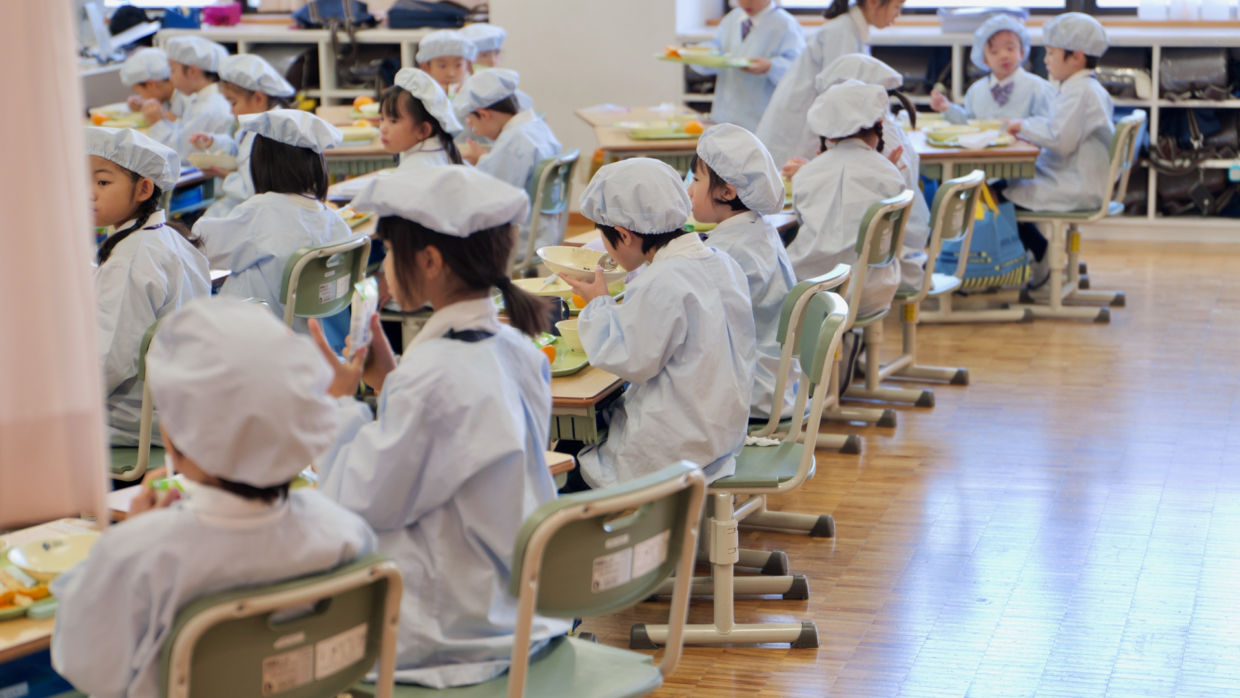
School meals are expanding in most regions, with governments increasingly recognising the importance of formalising school meal programmes into institutional policy and connecting them with other health and nutrition initiatives and allocating domestic budgets. Investments in children’s nutrition has economic future economic gains for the whole country.
In Cambodia for example, the Home-Grown School Feeding Program has reduced food insecurity in vulnerable communities and promoted gender equality by creating income opportunities for women. Energy-efficient stoves and locally sourced foods have contributed to environmental sustainability.
Rwanda announced in 2022 that school meals coverage increased from 660,000 to 3.8 million students, and the national budget dedicated to school meals increased from $33 million to $74 million. And in Benin, the country has committed to moving towards universal school meals coverage with a national budget increase from $79 million to $240 million over the next five years.
But there is still a great deal of work to do to reach all, especially vulnerable communities and low income countries. Reaching children in fragile and conflict affected states remains a significant challenge, but one that needs urgent attention.
It is good to see the trend towards national sustainability. India is feeding some 90 million children daily and Brazil some 40 million children entirely from domestic finance. But lower income countries need more international support to match domestic financing.
Moving forward it will be important to expand school meal coverage but also to focus on healthy school environments. This includes access to water, sanitation and hygiene facilities, it includes strict policies that stop the sale of unhealthy foods on school grounds, promote more physical activity in the school day, nutrition education and regular health check-ups for children all help to get the best outcomes quickly.
This week’s event comes at an important time with an increased focus on nutrition stemming from COP28’s Declarations through the Summit of the Future and the launch of the new G20 Alliance on Hunger and Poverty. 2025 will be a big year for nutrition with the Nutrition for Growth Summit in Paris, the renewal of the WHA Nutrition Targets, UNFSS+4, the SUN Global Gathering and COP30 – all of which offer nation states and national stakeholders as well as the global community opportunities to accelerate cross-sector action for better nutrition outcomes for children, women and their families and communities.
As the world grapples with the new reality of shrinking donor funding, high debt levels, rising climate change and geopolitical challenges we will need a joined-up, systems approach that links nutrition into climate, food systems, health and education. At SUN we are actively supporting the preparations of Nutrition for Growth building on the tremendous success of the Tokyo Summit hosted by Japan. The commitments that many of your governments make will be the key to taking forward actions to build the human capital that is needed for the next generation of leaders. You will hear more about the Summit from Brieuc Pont in a moment.
Global networks such as the Global Child Nutrition Foundation play an important role by helping to build bridges across sectors, stakeholder groups, views and traditions, helping us to learn from each other and collaborate better for effective local nutrition solutions.
I want to also specifically thank the sponsors of this event (Rockefeller, CIFF, Ajinomoto, Catholic Relief Services, Food 4 Education, the foundation for Fresh Produce, Nakanishi and World Vision) for their commitment and leadership in this important area of nutrition. And I must also acknowledge the exemplary work of the School Meals Coalition co-chaired by Brazil, Finland and France working together to ensure that every child receives a healthy and nutritious daily meal in school by 2030.
Investment in nutrition is good value for money, a $1 investment can have a $23 return. And, the benefits far outweigh the costs of no action ($41 trillion over ten years according to the World Bank). Including school meals as part of a life-cycle approach that supports good nutrition at every stage of life—from breastfeeding and nutritious first foods for babies, to healthy school diets and vitamins for adolescents, especially girls—can help every child reach their full potential and build healthier, more productive societies.
I wish you an enjoyable and informative event. Thank you.”
Since 2010, the SUN Movement has inspired a new way of working collaboratively to end malnutrition, in all its forms. SUN works with countries across Southern and South-eastern Asia to tackle persistent malnutrition challenges. In Sri Lanka, the success of the National School Meals Programme demonstrates the power of multiple sectors, stakeholders and communities working together. Learn more about this work here.
Photo credit Kenichiro Takamatsu, property of the Global Child Nutrition Foundation
Highlights from the 24th edition of the Global Child Nutrition Forum
The 24
th edition of the Global Child Nutrition Forum – the world’s largest and longest
running Forum dedicated to supporting governments and their partners in implementing
high quality school meal programs – took place from 9-12 December in Osaka, Japan
Seeing the Value of School Food Workers and Their Labor
Seeing the Value of School Food Workers and Their Labor
Blog by Jennifer E. Gaddis, Associate Professor of Civil Society and Community Studies at the University of Wisconsin-Madison, and Sarah A. Robert, comparative and international education and gender policy expert and an Associate Professor in the Graduate School of Education at the University at Buffalo (SUNY)
State-sponsored school meal programs not only improve children’s health and well-being, but also promote educational access by helping to attract and keep the most vulnerable populations in school. These programs can also play a vital role in catalyzing broader food system transformations that increase local agro-biodiversity, strengthen food sovereignty, and shift power away from multinational corporations to the communities where children are fed. All of this depends, however, on the paid and unpaid labor of a predominantly female workforce that is too often overlooked in policy discussions, research, and data sharing about school meals around the world.
As the 2024 Global Child Nutrition Summit nears, we encourage participants and other school food stakeholders to “see” this labor and have intentional conversations about the importance of school food workers in an era of food systems transformation. Drawing from our new open-access book Transforming School Food Politics around the World (MIT Press 2024), and global survey data collected by the Global Child Nutrition Foundation, we offer a brief snapshot of gendered labor in school food programs, highlight both the visible and invisible nature of this labor, and suggest an agenda for future data collection and collaborative learning.
Gendered Labor in School Food Programs around the World
Women disproportionately undertake the labor of feeding children at school, reflecting broader societal norms around gender and care work. According to the 2021 Global Survey of School Meal Program database, 82% of programs globally reported that at least three quarters of cooks and caterers are women (GCNF 2022). This database covers 139 countries–roughly 81% of the world’s population–however, only 62% of these countries (86 countries) provided an estimate of the number of people employed in their school meal programs.
So what do we currently know? The 86 countries that provided employment estimates report a total of 3.7 million paid personnel, most of whom worked as cooks/food preparers, and servers. We also know that about 37% of school meal programs in the database emphasize creating jobs or income-generating opportunities for women, resulting in roughly 1,668 jobs created for every 100,000 children fed (WFP 2022). This explicit emphasis on creating jobs or income-generation opportunities for women is more common within low-income and middle-income countries’ school meal programs.
“Seeing” Visible and Invisible Labor
One thing the data doesn’t tell us much about is the contributions of school food workers beyond the core task of feeding children. Yet, as we argue in Transforming School Food Politics around the World, there are both visible and invisible forms of labor that these workers perform. The most visible aspects of their labor involve culinary work (preparing the food children eat), service work, and the maintenance of physical spaces like kitchens and cafeterias. This work may also include menu planning, attending to children’s dietary needs or restrictions, soliciting payment for meals, or verifying eligibility for free meals. The invisible labor, which is rarely (if ever) detailed in job descriptions, but nevertheless expected of many school food workers around the world largely involves what we refer to as “care work.” This includes direct care of students’ physical, emotional, and social needs (e.g., fostering social connections), as well as the care for the natural environment, and the welfare of workers across the school food chain who can be supported through values-aligned purchasing.
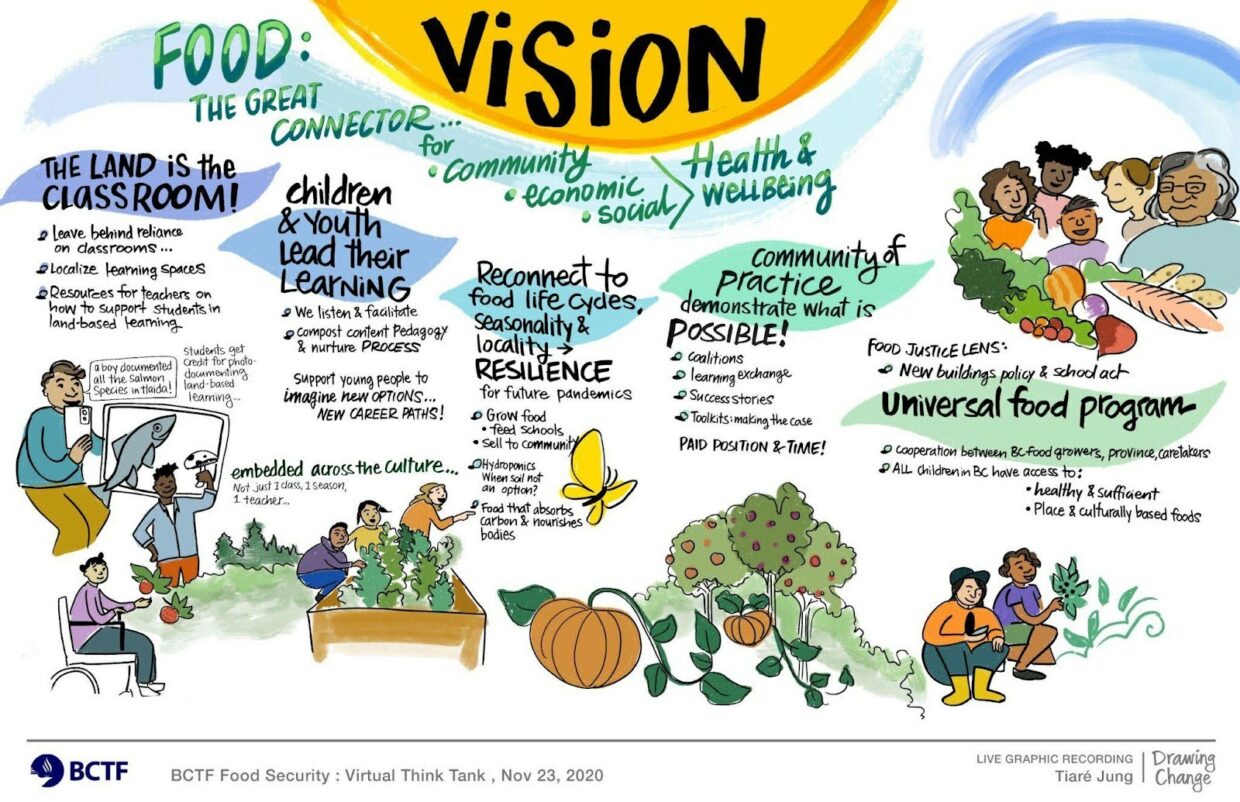
For example, in Canada, a country that did not have a national school food policy until June 2024, both the visible and invisible labor of school feeding is performed by paid workers, community volunteers, and adults (mostly mothers) in the home. As one of the contributors to our volume recently wrote, the lack of uniform state-sponsored feeding adds to both the (visible) physical and (invisible) mental labor that women perform in the home. In another chapter, Canadian contributors highlight the invisible labor of teachers (another women-dominated occupation) who use their own time and financial resources to address food security and food justice issues that impact their students.

Credit: Emmanuelle Ricaud Oneto.
Other chapter contributors highlight the (gendered) visible and invisible labor in their school meal programs. In two Native communities in the Peruvian Amazon, local mothers take turns preparing meals using ingredients distributed through Peru’s national program and, at times, incorporate local fish or produce that students contribute. Their labor to produce school meals is unpaid, yet vital to the health and well-being of children and youth in their communities.
We know from the GCNF’s data that this type of unpaid labor is not an isolated instance. 32% of programs globally reported in the 2021 survey that less than half of their cooks/caterers received payment for their work. Yet two chapters focused on the Brazilian states of Ceará and Paraná show us that women as agroecologists, as farmers, and as land owners become visible, empowered when procurement contracts prioritize their knowledge and contributions to school meals.
Research and Co-learning about Labor in School Food Programs
As school meal programs grow and change, we see an important role for the 2024 GCNF Forum and the United Nations-backed School Meals Coalition to share best practices, experiences, information, and technical support for creating high quality employment, which recognizes the value of both visible and invisible labor in school food programs around the world.
So how might we do this? In the United States, for example, the federal government recently allocated $1.5 million to fund a 3-year study of its school food workforce. We are eager to learn about similar efforts and hope to connect with other researchers interested in this topic. Robust data collection on the school food workforce within other country-specific contexts would help policymakers and practitioners better understand the current status of the global school food workforce and identify the most promising strategies for “gender-just transitions” within the broader context of food systems transformation (UN Women 2024, p. 91). We encourage other countries to fund research on the school food workforce and also see tremendous potential for organizations like the World Food Programme (WFP) and the GCNF that already conduct global surveys to include more detailed questions about the demographics, work structures and conditions, and impacts of school food workers. We also encourage thematic sessions focused on school food labor at global gatherings of school food stakeholders and the creation of a specific topical area “labor and workforce” in online platforms and databases that aggregate statistics and other research on school food programs.
About the authors:
Jennifer Gaddis is an associate professor of Civil Society and Community Studies at the University of Wisconsin-Madison. She is an expert on school food politics and systems change. Dr. Gaddis is author of the award-winning book The Labor of Lunch: Why We Need Real Food and Real Jobs in American Public Schools (University of California Press, 2019) and principal investigator of a $1.5 million USDA-funded study of the school food workforce. She is the co-editor with Sarah A. Robert of Transforming School Food Politics Around the World. Gaddis is an advisory board member of the National Farm to School Network and has written op-eds on school food politics for popular media outlets such as the New York Times, Washington Post, USA Today, and The Guardian.
Sarah A. Robert is a comparative and international education and gender policy expert and an associate professor in the Graduate School of Education at the University at Buffalo (SUNY). She is the author of Neoliberal Education Reform: Gendered Notions in Global and Local Contexts (Routledge, 2017), awarded the Critics’ Choice Book Award from the American Educational Studies Association. Robert co-edited with Jennifer E. Gaddis Transforming School Food Politics Around the World (MIT Press, 2024). She also edited “Intersectionality and education work during COVID-19 transitions” for Gender, Work, and Organizations (2023); Neoliberalism, Gender, and Education Reform (Routledge, 2018); and the award winning, School Food Politics (P. Lang, 2011).
References
Global Child Nutrition Foundation (GCNF). 2022. School meal programs around the world: results from the 2021 global survey of school meal programs ©. Accessed at survey.gcnf.org/2021-global-survey
Gaddis, J. E., & Robert, S. A., Eds. (2024). Transforming school food politics around the world. MIT Press.
Staab, S., Williams, L., Tabbush, C., & Turquet, L. 2024. Leveraging school feeding programmes for gender-just transitions. In “Harnessing social protection for gender equality, resilience and transformation,” Box 3.4, p. 91. World Survey on the Role of Women in Development. New York: UN-Women.
World Food Programme (WFP). 2022. State of School Feeding Worldwide.
K-12 School Nutrition Leaders Serve A Powerful Role In Growing Produce Consumption
Today, as environmental challenges grow, there is much we can learn by looking back and rediscovering how to live as they did. This desire to reconnect with ancestral wisdom inspired me to set up the “Mwinimunda Heritage Homestead Project” in Lusaka, Zambia.
Continue reading

